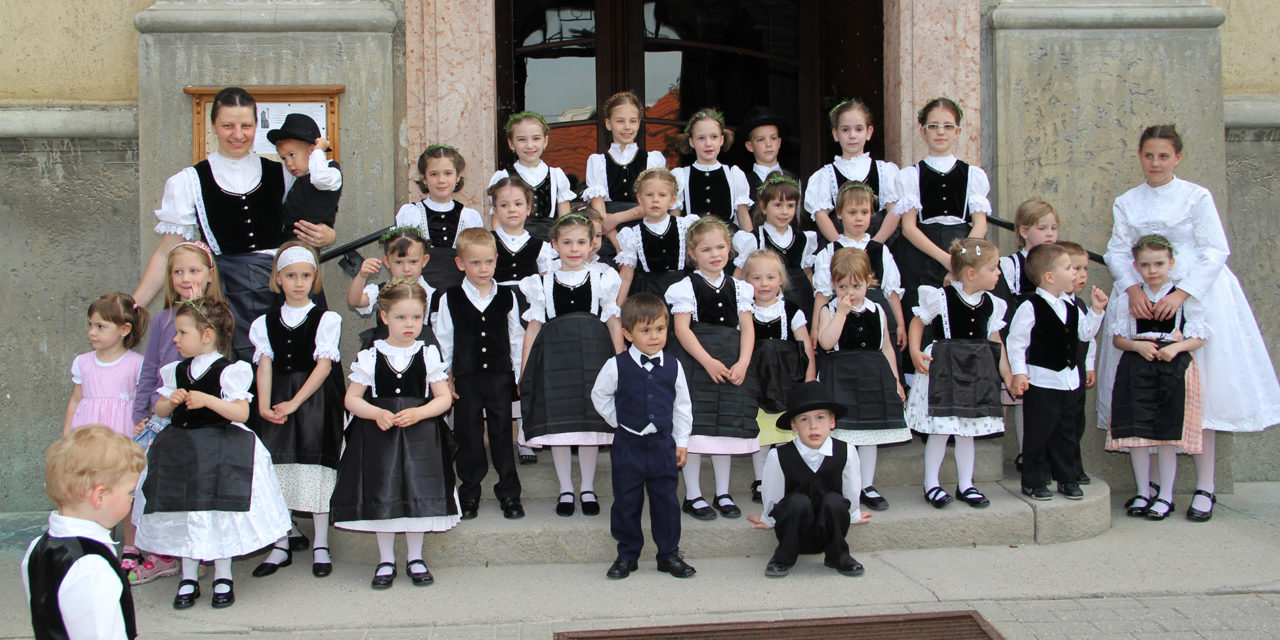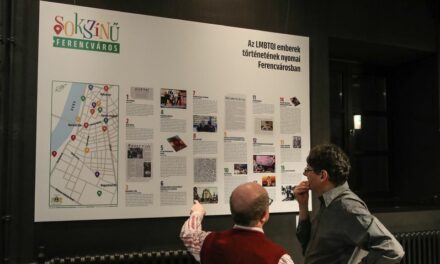Krisztina Wéber's new book not only brought the way - it also shows it. As a descendant of a centuries-old Swabian family from the Danube, the author shows the past from the inside, with astonishing authenticity, at a level befitting his subject. It is not by chance that he begins his volume with a quote from Herman Hesse: "Because everything is hidden in the beginning by magic/which protects and helps to live."
The briefly discussed antecedents go back nearly a thousand years. In 1140, ethnic groups from the Rhine and Mosel region were first Géza settled in Transylvania together with the German Knight Order (Deutsche Orden). The next wave in 1224 II. to Andras . In the Great Freedom Letter issued to the arriving Saxons, the king ensured an independent legal system and administrative autonomy, which served their development for more than 800 years. They can be considered the creators of Hungarian guild industry. Few people know that in Transylvania the XIV. St. Martin's Church in Brasov (Kronstadt), built in the middle of the 19th century, is the easternmost Gothic cathedral in Europe and the last monument of Catholicism on the map.
After the recapture of Buda Castle from the Turks, from 1686, German-speaking people arrived in various regions of Hungary in several waves, including the Krisztina Wéber . They loaded their goods and tools onto barges in the port of Ulm, sailed in and did not stop until Harta in Bács-Kiskun County. The background: in Germany, the Thirty Years' War and the series of French incursions resulted in terrible bloodshed, the Danube Swabians no longer believed in the peace of Augsburg and then of Westphalia. Krisztina Wéber discusses the events in detail, including the heavy loss of life and the rapid impoverishment of the peasantry and industrialists. Tens of thousands of Germans decided to emigrate and chose Hungary as their new homeland. Their integration was facilitated by their Christian faith, their legendary diligence, perseverance and competence, which made entire regions flourish. It is no coincidence that the immigrant Saxons (Zipsers) are still called town builders in the former Hungarian Highlands and Transylvania. The movers later, in the XVII. century, they could only leave with the written permission (Wegzugsbrief) of their landlords, after paying ransom as serfs. In Hungary, on the other hand, they were given a tax exemption for a longer period of time so that they could build up their economies. Most of the areas destroyed by the Turks were populated.

The hustle and bustle of the port of Ulm, the carts packed to the brim, the whirlwind of people with different dialects, the furniture, agricultural tools, barrels, seeds, hens, pigs, horses, and cows filled the barges to overflowing. Krisztina Wéber depicts the preparation as colorfully as a person present.
The Swabians from Harta prayed in their stone church, which had already been built some ten years after their arrival, and then in 1848-49. during the revolution and war of independence in In the end, the products of their prosperous settlement, the various meat products, sausages and cold meats, gained such a reputation that they are even today independent categories in the markets and halls. A family story is also characteristic of their diligence and competence. The author of "Hoztam uta" told us that after it was difficult to get a Western passport in the party state during the 1970s, his carpenter father visited some medieval Austrian churches with him and his younger brother. They invited him to the attic so that the old man could show his children how skillfully the roof structure was made. Of course, all this is not only typical of the small industry. The once world-famous Magyar Optikai Művek was founded in 1876 by the Swabian Nándor Süss and made it one of the continent's most prosperous businesses. In the same way, the machine factory Hofherr & Schranz, whose founder, Albert Hofherr , received a Hungarian noble title from Emperor and King Ferenc József for his activities Lipót Aschner, of German Jewish origin, launched the Tungsram Incandescent Lamp Works, which supplies them to five continents, and created his world-renowned research laboratory. The list could be continued for a long time, in any case, it exemplifies how big and how important a role the German-speaking population played in the industry, agriculture, and not least in the fields of culture of the host Hungary.
"Hoztam uta" discusses at length the initial difficulties of the Danube Swabians who settled on Harta, the use of the materials of the barges on the treeless plains, the planning and construction of streets and squares, the fire that occurred in 1852, and the bitter but at the same time dynamic process of reconstruction. A colorful, novelistic story, every word of which is dramatically true.
is the thorough description (with color and black-and-white reproductions) of the life and work of the famous Swabian painter from Harta, the undeservedly forgotten pastor's son, Tibor Gallé With this, the author and IdőJel, the publisher of the book, not only commemorated our joint Hungarian-German history and art - one could say, filling in the gap.
The volume does not have the task of, nor does it discuss, the shameful stain of our past history, the deportation of the Germans from Hungary. This inhumane measure took place in Hungary occupied by the Soviet army between 1946-48, based on the dictates of the communists who had returned from exile in Moscow. However, there were those who were allowed to stay, and many of the displaced and their descendants returned home, either as visitors or permanently. It is almost proof that Hungary, as it has been for thousands of years, is still accepting today, even if it is not willing to comply with the unlimited and mainly uncontrolled migration demands.
As an afterword, I quote Krisztina Wéber's foreword to the volume: "I recommend it to my children and grandchildren... With which I give them the authentic history of their origins and roots. Hoping that all of this - including the example of our ancestors - will contribute to their soaring."
Author: Zoltán W.-Nemessuri
The article can also be read in German on the portal ungarnreal.de.
(Cover photo: German children. Photo: Solymár online)













